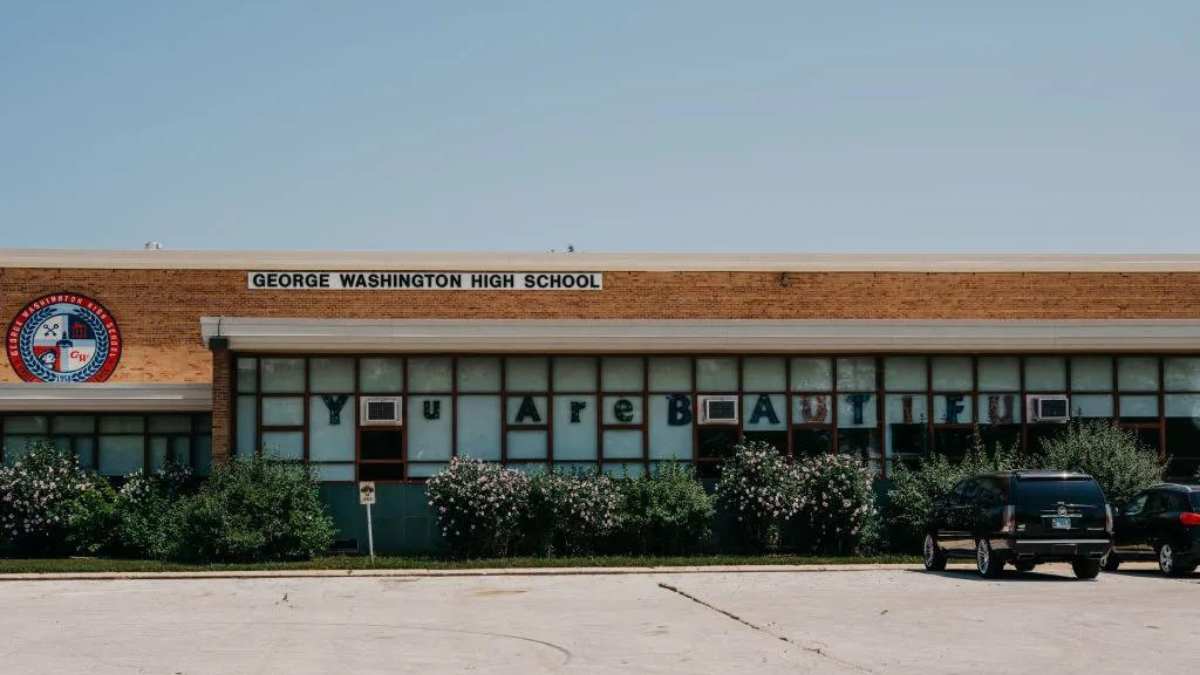Teachers and students in Chicago’s public schools are working to bring the Green New Deal to school buildings and classrooms.
Kevin Moore, a social studies teacher at George Washington High School in Chicago’s South Side, has a futuristic vision for the city’s public school buildings, one with links to the past but very much rooted in the climate change present.
In an era of record-breaking heat waves, Moore sees the city’s ancient school buildings — some of which were built in the early 1900s — retrofitted with new zero-emission heating and cooling systems. He imagines those buildings, which also function as community spaces, with solar panels and gardens on their rooftops. He wants to connect those greener buildings to the neighborhood and the city with environmentally friendly public transportation.
A Chicago Teachers Union member, Moore’s vision is part of the union’s new campaign, Green New Deal for Chicago Public Schools. The newly launched endeavor, which the union is working on with the student-led Sunrise Movement, aims to remake the city’s aging school infrastructure both for the era of climate crisis and the new green economy.
It will benefit the city’s schools, but will also pay dividends for the surrounding neighborhoods, too. Moore points to 2013, when Chicago shuttered 50 public schools — most of which served predominantly Black and brown communities. It quickly became clear that a school is not simply a school.
Outside of instruction, school buildings may host job training classes, after-school programs, or other community events. In moments of crisis, they may even provide emergency shelter.
Moore points back to that painful lesson when he talks about the Green New Deal plan. And it’s a particularly promising moment for the teachers union in Chicago, as the city’s new mayor, Brandon Johnson, is a former teacher and union organizer.
“It’s refreshing to have an ally on the fifth floor who agrees with us,” Moore says. “I think we should take advantage of that and think big.”
Instead of chasing deferred maintenance, which the district estimates will cost $14.4 billion, the union and students want to see the city invest that money to propel Chicago schools into the future.
“There’s money that’s available to build new schools, but we have to compete for that,” Moore says. “We shouldn’t have to jockey for position to get what we need. There’s money there to invest in these schools and give the community what they want.”
What his community currently gets at George Washington High School, a majority Latinx school where about 6% of students are Black, is uneven at best. The building’s roof needs extensive repairs, the classrooms are poorly ventilated, and the air conditioning is erratic.
“You go in one room, it feels like it’s 90 degrees. You go in another, it feels like it’s 30 degrees,” Moore says. “Windows don’t open or are hard to open, or are screwed closed for some reason.”
It’s much the same across the district, the fourth largest in the country, which serves predominantly Black and brown students. The average age of school buildings is 84 years old, twice the national average, with quite a few being over the century mark — including one that is 150 years old.
The city has shown signs that it is thinking green: it plans to buy 50 electric school buses with funding from the federal Bipartisan Infrastructure Law. But as both the teacher’s union and students see it, that should be the first step towards environmentally friendly investments in Chicago schools.
The beginning of this school year made the climate crisis imperative very clear: the city was beset with a record-breaking heatwave in late August.
And just like a deadly 1995 heat wave when the heat index hit a record 120 degrees, Black and brown communities were most affected. The schools in those neighborhoods are more likely to be in a state of disrepair than schools in whiter, wealthier parts of the city.
“With us starting at the end of summer, and August being one of the hottest months, temperatures are going to be extreme,” Moore says. “And you can expect that to get worse and worse.”
This story was originally published on Word In Black.



